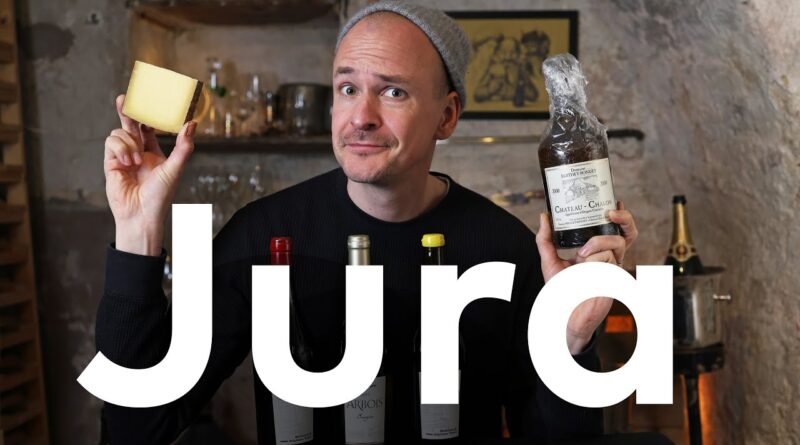Jura – The SMALLEST Wine Region in France
Support me on my PATREON: https://patreon.com/konstantinbaum
Follow me on …:
https://www.instagram.com/konstantinbaum_mw/
Check out my website:
https://baumselection.com/
I use this wine key: Laguiole en Aubrac Wine Key Ebony
I have used this glass in this Video: RIEDEL Performance Riesling
I have tasted the following wines in this Video:
2015 Stéphane Tissot Trousseau Singulier Arbois France
2015 Domaine de la Pinte Savagnin Arbois France
2019 Stéphane Tissot Chardonnay Les Graviers Arbois France
2000 Domaine Berthet-Bondet Vin Jaune Chateau Chalon France
The 100 Point Scoring System (from www.robertparker.com):
96-100: An extraordinary wine of profound and complex character displaying all the attributes expected of a classic wine of its variety. Wines of this caliber are worth a special effort to find, purchase and consume.
90 – 95: An outstanding wine of exceptional complexity and character. In short, these are terrific wines.
80 – 89: A barely above average to very good wine displaying various degrees of finesse and flavor as well as character with no noticeable flaws.
70 – 79: An average wine with little distinction except that it is soundly made. In essence, a straightforward, innocuous wine.
60 – 69: A below-average wine containing noticeable deficiencies, such as excessive acidity and/or tannin, an absence of flavor or possibly dirty aromas or flavors.
50 – 59: A wine deemed to be unacceptable.
When I started to learn about wine, the Jura region was nowhere on my radar and it wasn’t even on the France wine region map of my WSET Wine course book. There are several reasons for that: First of all, it is the smallest wine region in France with 2,080 hectares of vineyards and a very limited production with varying yields.
But also the grape varieties and wine styles that make the region a bit less accessible than others. On the plus side made it a more interesting region to talk about for Sommeliers looking for the next discovery.
Apart from the omnipresent Pinot and Chardonnay, it is also home to Savagnin. Poulsard and Trousseau; three varieties which are rarely found outside of the region. But Savagnin is one of the oldest Vitis Vinifera Grape varieties and parent to among others Sauvignon Blanc, Chenin Blanc, and Silvaner. The variety is also known as Traminer and Gewürztraminer is its aromatic variant. It is also the grape variety used for the most iconic wine in the region: Vin Jaune…
Vin Jaune, the yellow wine, is made by letting Savagnin wine age under a layer of flor yeasts – similar to the process that is used to make Sherry. The wine is concentrated and develops nutty and oxidized flavors while at the same time becoming really dry and salty.
The main difference to sherry is that it is not fortified so alcohol levels are lower and the wine is one of the only ones that can be filled in a special bottle with only 620 ml size clavelin. I believe that these bottles cannot be imported into the US due to their size. I always thought that the presence of yeast films on the wine inspired its most famous son to do the important work that he did… Louis Pasteur lived in Arbois in the Jura region and without his experience with wine we might never have discovered the processes behind fermentation and consequently pasteurization.

